On my way north from Naples in mid March, 2019, I saw some of the few things I had missed in my previous two trips in Italy in Lazio Province (Rome and area), Umbria, Tuscany and Emilio-Romagne before heading to new territory – Veneto.
TUSCANY
Montepulciano is a medieval and Renaissance hill town in the Italian province of Siena in southern Tuscany. It sits high on a 605-metre (1,985 ft) limestone ridge, 13 kilometres (8 mi) east of Pienza, 70 kilometres (43 mi) southeast of Siena, 124 kilometres (77 mi) southeast of Florence, and 186 kilometres (116 mi) north of Rome by car.
Montepulciano is a major producer of food and drink. Renowned for its pork, cheese, “pici” pasta, lentils, and honey, it is known worldwide for its wine. Connoisseurs consider its Vino Nobile, which should not be confused with varietal wine merely made from the Montepulciano grape, among Italy’s best.
In the NM “small town” series, this south Tuscany hilltop town is visible for miles. It is full of palazzos, churches and wine stores. The main church fronts the main square. The relatively plain white interior has nice stucco, art and a nativity scene.
:max_bytes(150000):strip_icc()/GettyImages-665113546-592bbf5a5f9b585950740496.jpg)
Val d’Orcia – This rural valley is a showcase of Tuscan scenery, green fields, rows of cypress trees and olive orchards in rolling hills. It is protected as a WHS and makes for a lovely drive.
Piensa (pop 2125). This was a sleepy hamlet until Enea Silvio Piccolomini (later Pope Pius II) summered here and decided to rebuild the village in Renaissance style. Plazza Pio II is the small main square surrounded by the Chiesa S Maria Assunta (plain by most standards, it has geometrics painted on the ribs of the vaulted ceiling), the Palazzo Piccolomini, Palazzo Borgia (museum) and the Palazzo Publico. The walled town is very small and hard to believe that in the summer, tourists outnumber residents by 50:1. The Historic Centre was listed as a WHS in 1996.

On the drive here, I passed frequent signs for the Via Francigena, a pilgrimage route from Canterbury England to Rome. The route goes through San Gimignano, Monteriggioni, San Quirico d’Orcia and Radicofani (www.francigenalibrari.benicultural.it)
Territorial Abbey of Monte Oliveto Maggiore. On the way to Sienna, this was 8.5km each way off the highway. I had a 2-hour nap before arriving at 15:10, just as the abbey was opening at 15:15 (god was on my side). The highlight is the frescoes surrounding the glassed cloister. Most show the white-frocked monks in remarkable detail. I saw at least 10 monks, all seeming to be going somewhere.

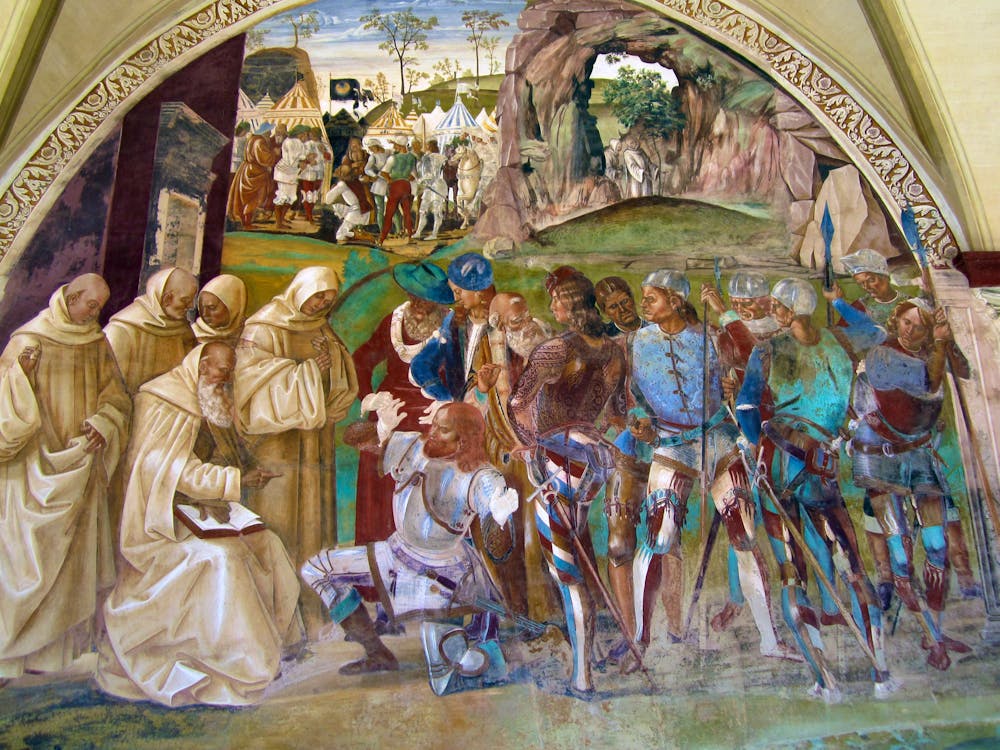
Volterra (pop 10,500). This fortified medieval city sits atop a long hill. There are Etruscan ruins in an archaeological park (the fortress, now a forbidding state penitentiary was built on top), a Roman theatre, (its wall form most of the west boundary of the city), a 1120 cathedral (44m bell tower) and baptistery, the 13th century Palazzo dei Priori (the still used Council Chamber and bell tower cost 13€ to visit) and many alabaster stores. The Historical City and Cultural Landscape are a tentative WHS (01/06/2006). I drove into the city on wide streets and found good parking, then walked to the duomo at the north end of town and back. Buy the biglietto cumulative to cover 4 museums.


After a big descent, it was a nice 30km drive through the Tuscan countryside to San Gimigano.
SAN GIMIGANO (pop 7,800). This is another fortified medieval hilltop town visible for miles with its 14 high towers. Looking like a medieval Manhattan – there were originally 72 in a duel of tower one-upmanship. The 1348 plague wiped out much of the population leading to the town’s submission to Florence in 1353. San Gimigano is famous for its Vernaccia wine. A Thursday morning market is a good place to buy saffron. The Historic Centre of San Gimignano is a WHS
Torre Grossa, at 54m it is the highest tower and can be climbed (218 steps) for great panoramas (pass a risqué series of frescoes when entering the tower).
Palazzo Communale. Also covered in frescoes.
Duomo (Basilica di Santa Maria Assunta or Collegiata) has 14th-century frescoes covering the entire inside on three levels depicting bible stories from the Old and New Testament. Covering the inside of the façade is the Last Judgement – details of hell, purgatory and heaven. Right next to it is the Piazza dell Ostena with a nice well in the middle.
Buy the €13 San Gimignano Pass to visit all the museums.
The drive along the SR222 between Siena and Florence is Chianti country with multiple opportunities to visit estates. This is also a popular cycling route. I passed a group of about 30, most pushing their geared bikes up hills.
EMILIA- ROMAGNE
BOLOGNA (pop 380,000)
Bologna is half a hard-working, hi-tech city in the super-rich Po Valley and half the Bolshie, the politically edgy city with the world’s oldest university founded in 1086. It has a reputation for rich food (ragu or Bolognese sauce originated here), the learned, terracotta medieval buildings adorned with miles of porticoes and left-wing politics.
Bologna Welcome Card (www.bolognawelcome.com/en) offers free museums for 48 hours. This might be a good deal if one went to several of the museums that were not on the NM list, but I didn’t, and for the first time I can remember, did not use the face value of the card (most museums gave a 50% reduction if over 65). I did go on the free city tour offered as part of the card and it was excellent. I even gave the guide a €5 tip. Buy the card at the Welcome Bologna tourist office in the main plaza. €25. For €40, add public transportation and the Torre Asinello.
The Porticoes of Bologna. Rainy or snowy, sunny or windy days: with its almost 40 kilometres of porticos Bologna is a unique city in the world. These porticos make it easy to stroll around the city centre, go shopping or walk from one museum to another under a safe shelter away from both bad weather and the scorching sun.
Porticos have the same aim today as the one they had in the late Middle Ages when they were first built; the urban migration and the arrival of students and men of letters at the oldest University of the Western world caused an extraordinary growth of the city, and at that time Bologna had the same urban development as Paris. The origin of porticos is the sporto, a protruding wooden structure that was usually built in order to extend the inner living space of the upper floors. These structures then grew bigger and heavier, so that it was necessary to prop them up with wooden beams which inevitably occupied the street. Today it is still possible to see some examples of these first porticos in the historical centre: the wooden portico of Isolani House (19, Strada Maggiore), the one of Palazzo Grassi (12, via Marsala) and the portico of the Reggiani – Seracchioli Houses (Piazza della Mercanzia).
The streets were soon so crowded with porticos that the city council decided to lay down some official rules. While other cities had banned the portico, in Bologna it became compulsory as a public space. The 1288 Statutes established that all new houses should have a portico and set out the minimum measures, for example, the height should be 7 feet (about 2.70 m) in order to allow the passage of a man riding his horse. This act left an imprint on the final appearance of the city.
Craftsmen contributed to the spreading of the portico throughout the city: they were an outdoor workroom, sheltered both from the summer sun and the winter rain and a well-lit space if compared with the dark workshops on the ground floor of their houses. In this sense, the portico became an extension of the house and the workshop.
San Luca Portico. Bologna has the longest portico in the world, too: 3,796 metres. It’s the portico starting just outside the city walls and leading to the Sanctuary of the Madonna di San Luca on the top of the Colle (hill) della Guardia.
This sheltered walkway was built between 1674 and 1739 for the procession which has taken place every year since 1433, when citizens carry the painting of the Madonna with Child around the city. The portico was partly built thanks to donations made by the citizens, which are mentioned in special plaques along the way, as the Sanctuary with its Sacred Icon has been a place of pilgrimage since its origin (12th century).
This long portico begins with the Bonaccorsi Arch at Porta Saragozza where you can visit the Museum of the Madonna di San Luca; then, passing along Villa Spada, Villa delle Rose and Celebrazioni Theatre, you come to the Meloncello Arch, built in the Baroque style.
The uphill climb begins at Meloncello (55 m. above sea level). The 2 kilometre spectacular stairway winds up to the Sanctuary (270 m. above sea level) along the via di San Luca and it’s lined by 15 chapels representing the Mystery of the Rosary. The steepest climb begins at about halfway, soon after the sharp bend called delle Orfanelle. Here, where a former female orphanage was, the street passes under the portico.
A lot of traditions are still linked to the San Luca Hill today, for example walking up to the Sanctuary if a prayer has been granted (for life-saving events, such as recoveries, but also for happy ending love stories, passed university exams, gambling wins, etc.). In the past, it was common practice to climb the hill on one’s knees while praying.
Nowadays jogging or riding a bike to the top of the hill has become a traditional sports activity. International bicycle, foot and motorcycle races often take place on the street running along the San Luca walkway.
These round-arched passageways are everywhere – there are at least 6000 in the city. On the day I was there, an announcement was to be made if these were to be taken off the tentative list (01/06/2006) and added to the permanent list.
Piazza Maggiore Area. The main plaza has as its centerpiece the Basilica, a wonderful Neptune Fountain (the water comes out of the nymph’s nipples).


the Palazzo Communale (the city hall) and the Palazzo del Podesta that has the Welcome Bologna office, 1500 completely different rosettes on its columns and a whispering gallery.
Basilica di San Petronio. The world’s 5th largest church (132m x 66m x 47m), work began in 1390 and the façade is still not finished – the bottom is white marble and the top half is very rough brick.

A huge horizontal sundial stretches 67.7m down the eastern aisle (it discovered the anomalies of the Julian calendar and led to the creation of the leap year, although our guide denied this). The sun shines through a small hole in an umbrella high up by a window and accurately shows the summer and winter solstice.
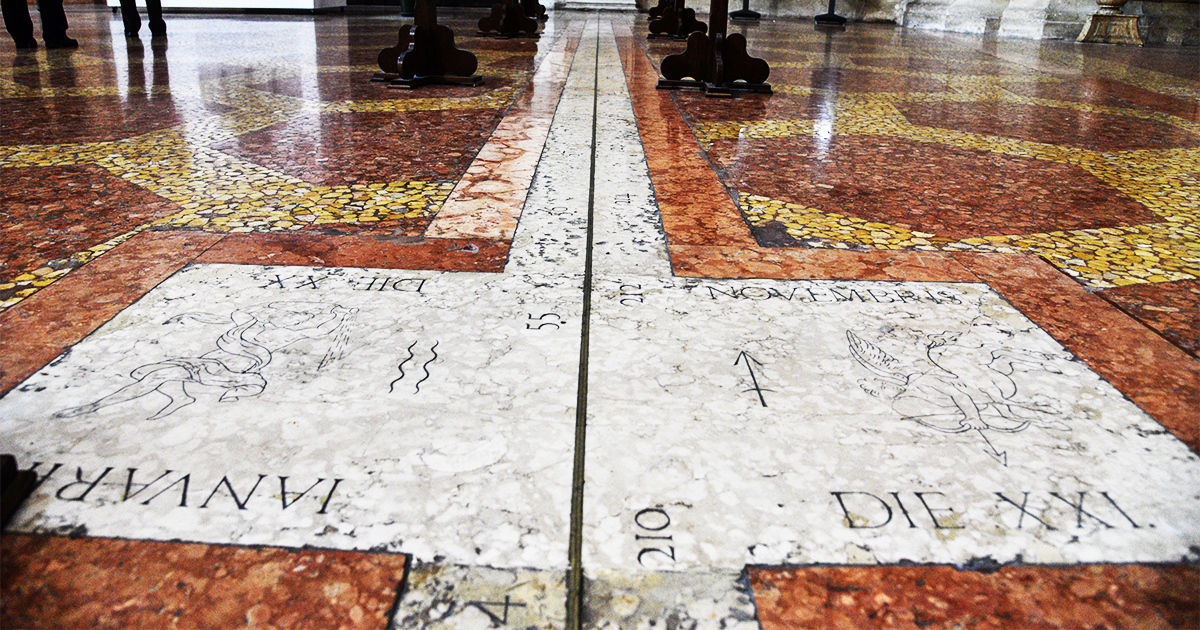
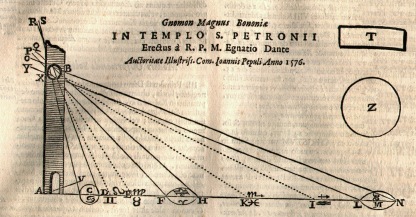
One chapel was a fantastic marble/fresco masterpiece. In the Last Judgment fresco,, interestingly Mohammed is in the hell portion. There was great concern that this blasphemous statement (made in the 15th century) would incite a terrorist attack, but the image was left as is with no problem.

This basilica does not have transepts as the papal powers of the day wanted to restrict its size, and so built the Palazzo dell’Archiginnasio. Free
Palazzo dell’Archiginnasio. The seat of the University of Bologna from 1563 to 1806, it was built along the entire east side of the basilica in 1561 by Pope Pius IV to block further expansion of the basilica.
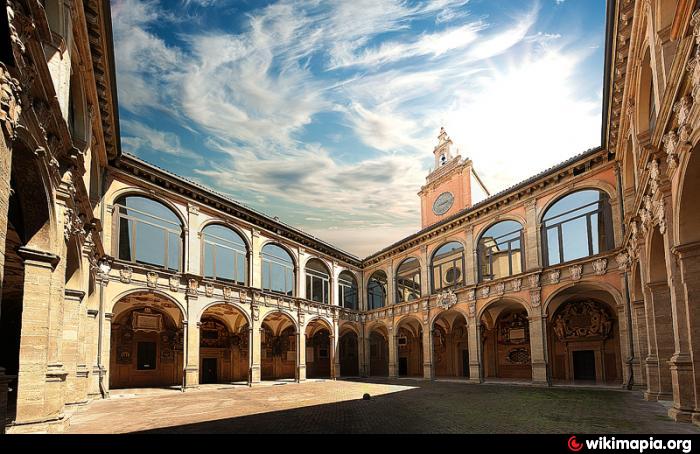
The walls are adorned with the 6000 coats of arms of individual students from all over Europe. The library has over 800,000 books. A highlight is the 17th-century Anatomical Theatre with wood tiered seats surrounding a central marble-topped dissecting table. It was completely destroyed by American bombs in WWII (it was too cloudy to drop the bombs on Livorno, the main naval base of the German navy so they continued on to Bologna) but has been rebuilt to exact standards.

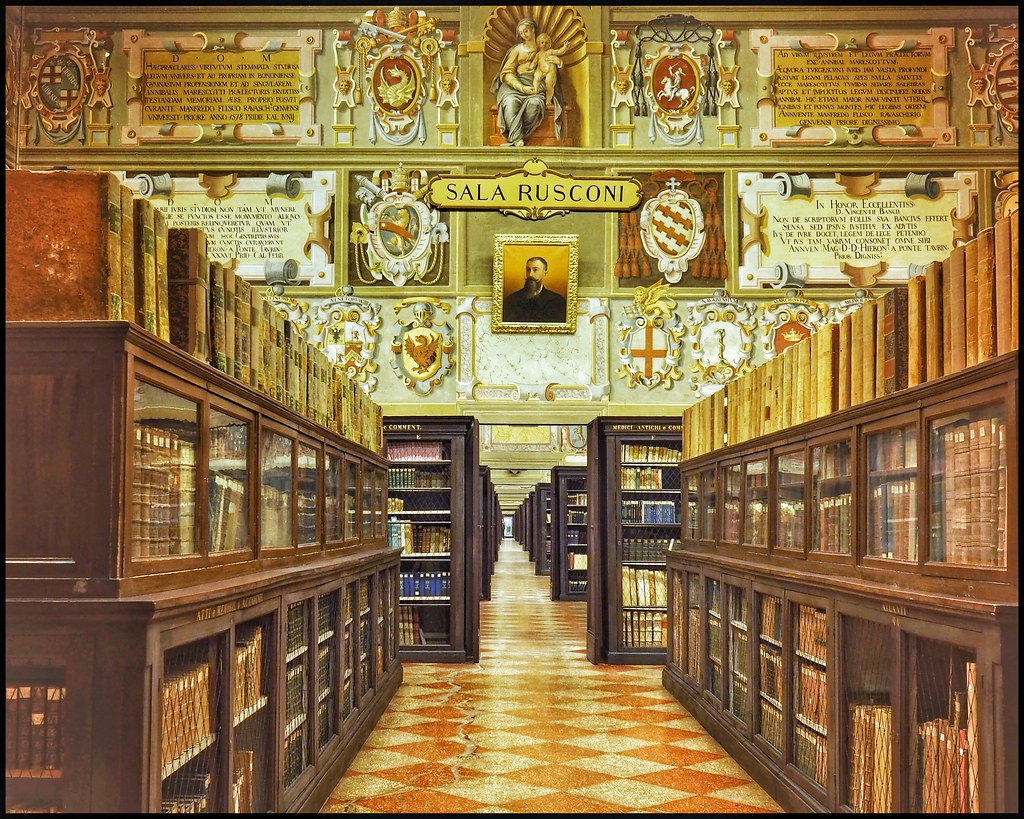
Mercado di Mezzo (Mercato Centrale). Just off the main plaza, this is another mouth-watering market with great food, meat and fresh vegetables.
Santa Maria della Vita Church. Next to the market, this church is famous for its terracotta statues of the lamentation of Christ. The 5 women displayed have an amazing escalation of emotion. The north of Italy did not have marble so terracotta was used instead. The polychrome colour does not last long on terracotta.
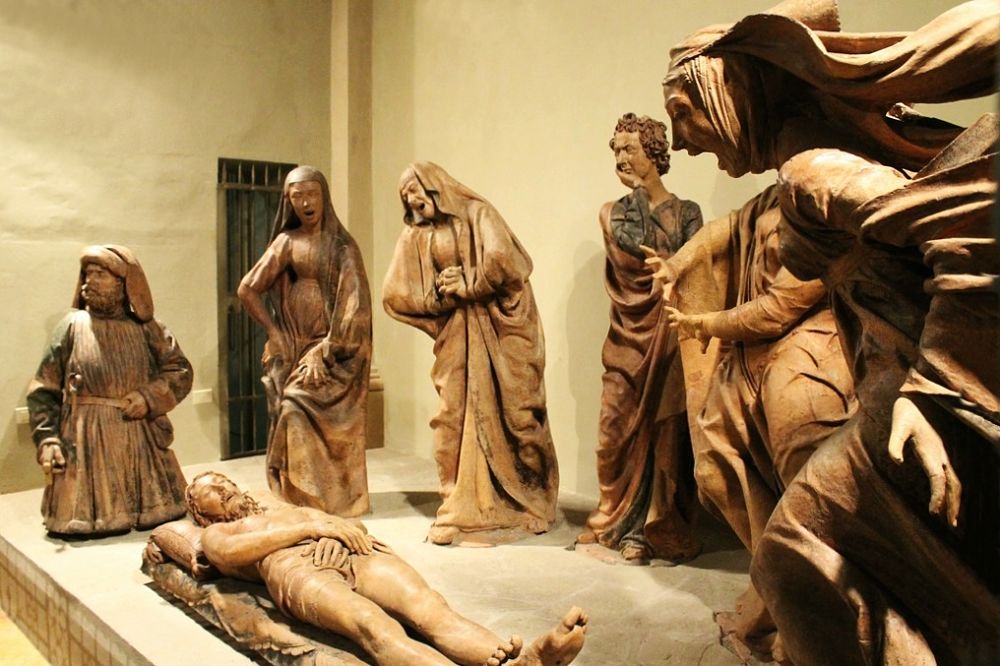
Museo della Storia di Bologna. The Museum of the History of Bologna is located in Palazzo Pepoli Vecchio, one of the major noble palaces of Bologna. The first nucleus of the palace was built in 1344 by Taddeo Pepoli, doctor of civil and canon law and first lord of the city. The building had the appearance of a real fortress surrounded by a moat. The current building is the result of a series of additions and modifications that have stratified over the centuries. In 2003 the Carisbo Foundation purchased it to make it the headquarters of the Museum of the History of Bologna created by the architect Mario Bellini and inaugurated in 2012. It uses interactive 3-D film to show 35 chronological themed rooms showing Bologna’s 2500-year-old history.
Northwest of the Plaza:
Cathedral of Bologna. Overshadowed by the Basilica of San Petronio, it has a nice terracotta display of the death of Jesus and the ruins of the previous church seen through glass flooring. I tried to find the cathedral museum but couldn’t. Free
Museo Civico Medieval (Medieval Museum) in the Palazzo Ghisilardi Fava, exhibits medieval Bologna.
Heading north from the main plaza towards the University:
Torre Degli Asinello. This 97.2m high tower, dates from 1109-1119 and is one of only 20 towers still remaining in Bologna. Climb the 498 steps to the top for the best views in the city. Today, it leans 1.3m off vertical. The neighboring Torre Garisenda is tilted 3.2m.
International Music Museum. In Palazzo Aldini Sanguinetti, it is combined with a library. The exhibit is older examples of sheet music, portraits of musicians and old instruments originating in Emilia Romana.
Palazzo Davìa Bargellini. This quirky museum is an eclectic collection of portraits, furniture and “curiosities of old Bologna” (wrought iron key plates and handles for furniture). Closes at noon. Free
University Area. The campus was moved north of the old centre in 1806. The multiple schools are housed in several buildings, most quite modern looking. The university is a WHS, mainly for the
Pinacoteca Nazionale di Bologna. The city’s main art gallery shows works primarily by Bologna artists from the late 13th century, virtually all of it religious. This stuff gets very tiring. How many pictures of Madonna and Bambino can one see? €6, no reduction.
Orto Botanico dell’Università di Bologna. This 2-hectare botanical garden has 5000 local and exotic plants including greenhouses with tropical plants, succulents and carnivorous plants. The Herbarium has 130,000 dried specimens, many from the 16th century. Note that it closes at 3 pm. Free
Museo Palazzo Poggi. Purchased in the 15th by the Poggi family (he was a cleric in the papal curia), it has an astronomical observatory, labs and collections of the Institute delle Scienza (1711-99) that was dedicated to scientific research. The Obstetrics Museum and the giant tortoise shells in the Museum of Natural Sciences. There is also the art collection of Poggi. €5 (not included in the Bologna Welcome card)
West of the centre:
Bologna Centrale Station. The main train station is a one-story modern structure.
Modern Art Museum (MAMbo). Housed in a former municipal bakery, this opened in 2007. It showcases primarily up-and-coming Italian artists. And is unfortunately like most modern art, not very good. €6, €4 reduced
Museo Morandi When I was there, this museum was part of MAMbo and included in the same admission. Don’t ask me when MAMbo ended and Morandi began.
FERRARA (pop 138,000)
Between Venice and Bologna, Ferrara is easily overlooked but is listed as a World Heritage Site: the City of the Renaissance, and its Po Delta. It has Renaissance palaces reborn as museums, a great Cathedral, a castle right off the main square and is second only to Lucca as having the most complete set of walls in Italy (at 9kms, Ferrara’s are longer and are unbroken on the north and east). Ferrara is also the most bicycle-friendly town in Italy.
Sant’Antonio in Polesine. This monastery and church are on the south outskirts. The small, square building has a lovely fresco covering the entire ceiling. Free

Palazzo Schifanola. Dating to 1385, the Este’s pleasure palace suffered significant earthquake damage in 2012, it is still closed. Inside are Ferrara’s most famous frescoes from 1470 that depict the months, seasons and signs of the zodiac.
Castello Estense (Castello delle Rocche). Complete with a moat and drawbridge, this towering brick castle dates from 1385. The residence of the d’Este family, the highlights are the Giant’s Room, Games Room and the dungeon (where Duke Nicolo III d’Este had his young, second wife and son beheaded after discovering they were lovers. Linked to the castle by an elevated passageway is the 13th century, crenelated City Hall. €6, €6 reduced
Cathedral and Museum. Built in the 12th century, the highlight is the three-tiered marble façade – Romanesque on the bottom and Gothic on top. The main door is St George slaying the Dragon. Stores have lined the north side since medieval times. The pink and white Renaissance belltower sits on the back corner. The museum holds various artifacts from the Duomo, the highlight is the witty bas-reliefs illustrating the months of the year.

Palazzo dei Diamanti. This palace is the main Ferrara art museum. The permanent collection, the Pinacoteca Nazionale, highlights the Ferrara school of artists, again mostly religious art. €13, €10 reduced. The temporary exhibit was on the artist Boldini, €13, €11 reduced
Po River Delta. The Po River Delta is the biggest wetland in Europe. The “Sweet Giant” is the nickname for the Po River, as it divides into seven water tributaries before emptying into the Adriatic Sea. Its natural distribution gives life to a unique natural environment.
By visiting the Delta, you will see landscapes made up of river basins, lakes, sandbanks and large rushes. Each branch of the river gives you a unique scene. The landscape is characterized at sunrise by a foggy haze, which provides for an enveloping atmosphere, while at sunset, red reflections are common. There are over 370 species of resident, migratory and migratory-stopover birds that make this area a desirable destination for bird watchers. There are many ways to visit the park: on-foot hikes, horse rides, boat tours, bike excursions.
Pancake flat, the delta is prime agricultural land, full of fields and vineyards. Canals and dykes tame the river. I crossed at least four branches of the languid river heading north. The delta starts in Ferrara and extends 60 driving kilometres to the sea.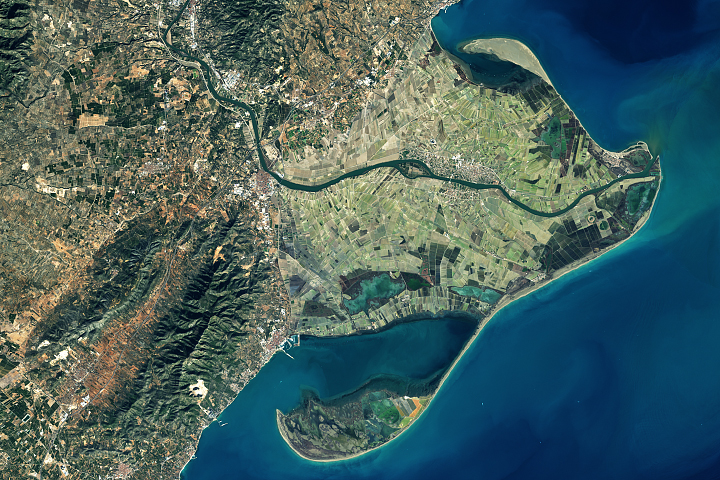
On the drive, I found the cheapest gas in Italy at €1,42.9 and the station had a car wash that was badly needed.
Pomposa Abbey. A Benedictine Abbey was here in the 6th-7th centuries and the church was built between 751-874. The abbey became a centre of spirituality along with the Via Romeo that connected Rome with northwestern Europe. It reached its height of importance in the 11th century when a large cloister was built and frescoes were painted in the refectory, chapter house and Santa Maria church. In 1152, the Po River flooded, changing the hydrology of the entire area and was a disaster for the abbey. There were 100 monks at the time of the flood, 20 in 1235 and the last left in 1671 and the abbey was abolished two years later. Allowed to deteriorate, it was purchased for agricultural purposes in 1802. The community has spent a lot of money completely restoring what was left.
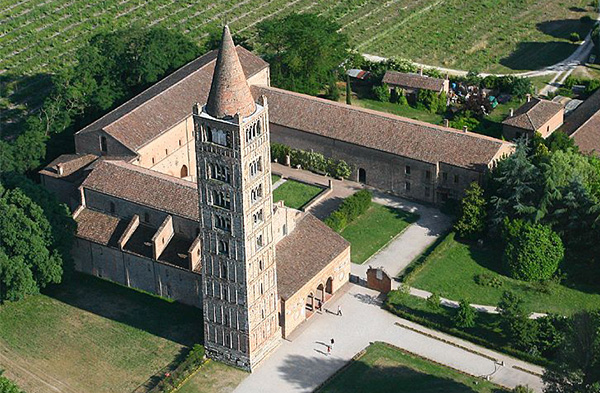
Museum. In the upper floor of the monk’s dormitory, there were two nice carved slabs with animals. The Stilate Room’s original wood-beamed ceiling was still intact.
Bell Tower had interesting windows – slits at the bottom increasing to 4 windows by the 10th story.
Church. Although the frescoes of the old and new testament and judgment were nice, the highlight for me was the lovely floor, half mosaic and half great marble mosaics. The brick façade had bas-relief animals and ceramic bowls inset in Pomposa stars.

